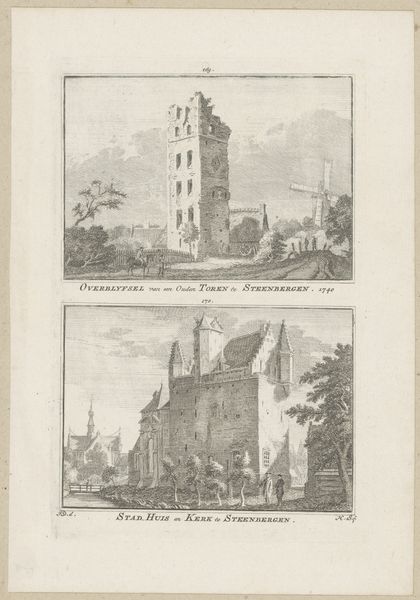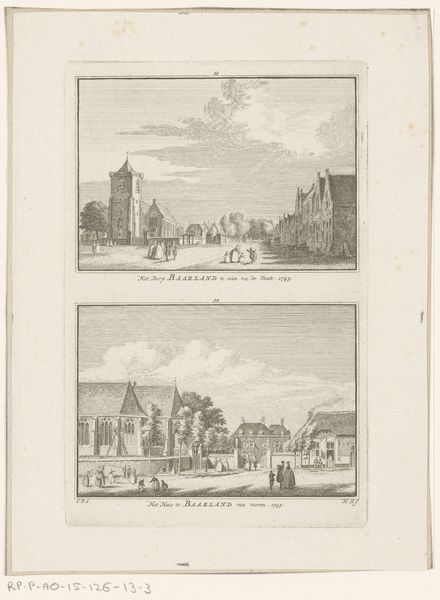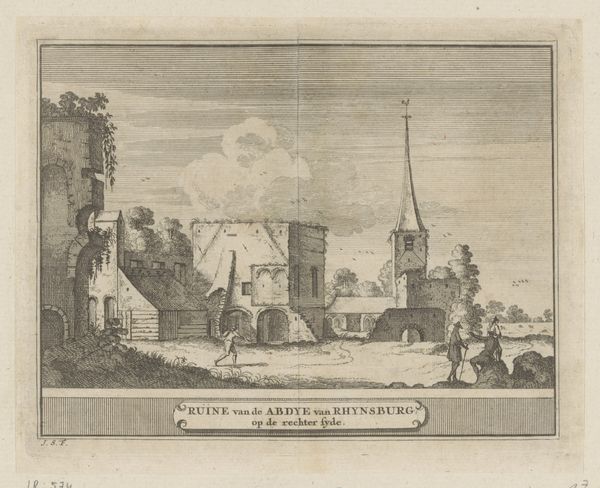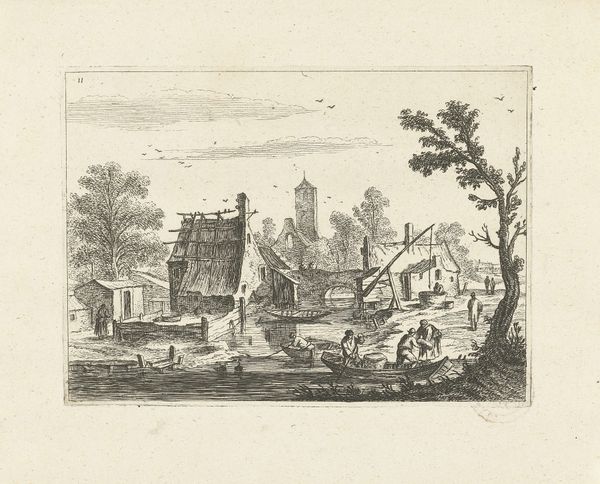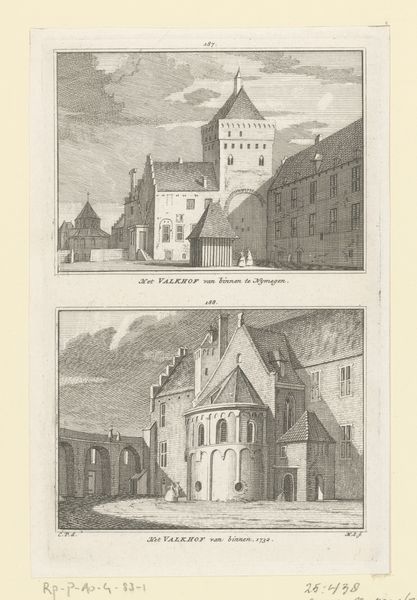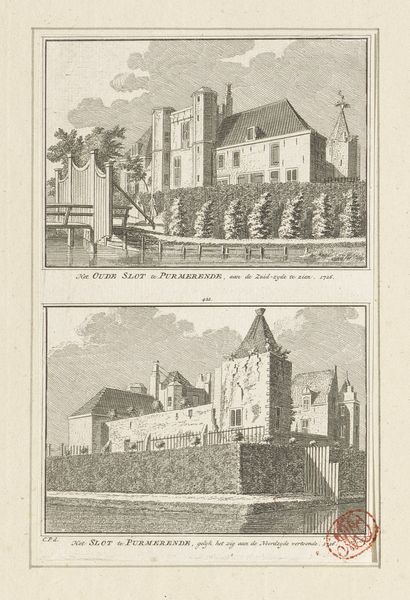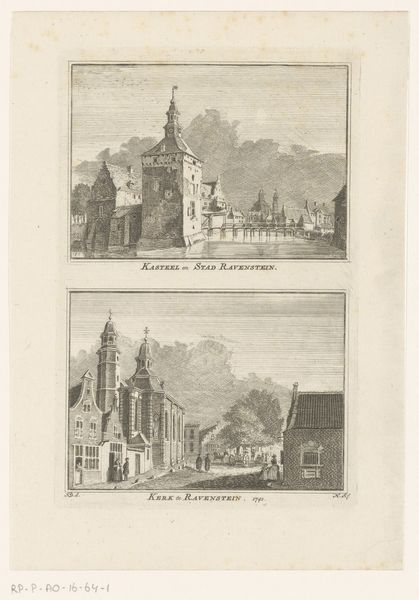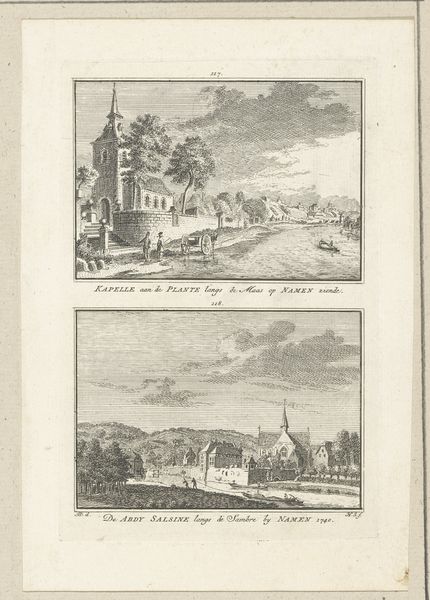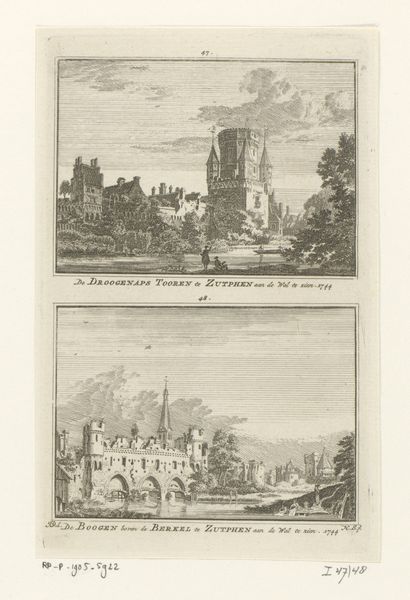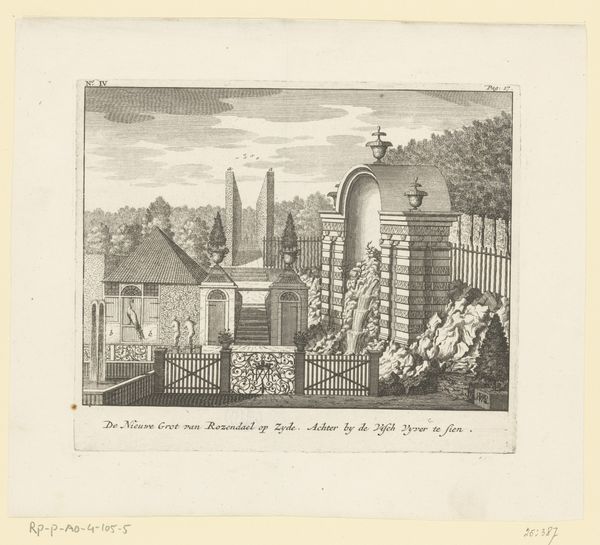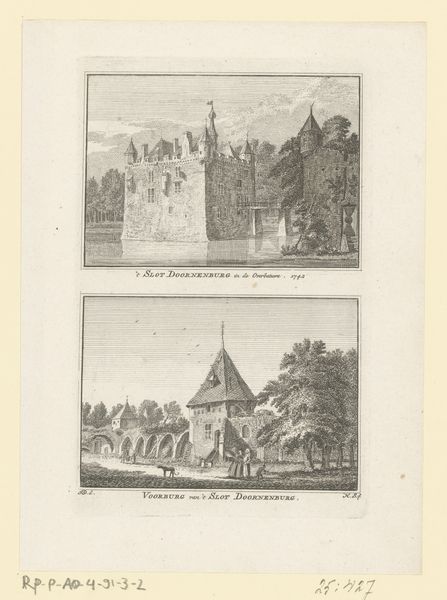
Dimensions: height 168 mm, width 110 mm
Copyright: Rijks Museum: Open Domain
Editor: So, this is Hendrik Spilman’s “Two Views of the Castle of Namur, 1740,” created sometime between 1746 and 1792, using engraving. I'm immediately drawn to how detailed the lines are, almost architectural in their precision. What do you notice when you look at this print? Curator: Immediately, the technique. Look at how the engraving transforms from a representational tool into a form of mass production. Each line is deliberate, a testament to Spilman’s labor, yet destined for replication, distributing this view of power. How does the materiality of the print itself - the paper, the ink, the etched lines - impact your understanding of the cityscape depicted? Editor: I hadn’t thought of it that way. The mass production almost democratizes the image of the castle, making it accessible beyond the elite who reside within. Does the choice of medium suggest a particular commentary on the castle’s role within society? Curator: Precisely! Engraving as a medium makes the artwork more of a commodity. Consider the social context: the rise of print culture, the burgeoning middle class eager for representations of the world. This isn’t just about showcasing a castle; it’s about Spilman’s position within the networks of artistic and commercial production of his time. The ‘high art’ of landscape is being translated through commercial printmaking. Where do you think the original sketches came from and how much do they reflect "truth"? Editor: That’s fascinating! It’s no longer just a beautiful image but also evidence of a whole system of production and distribution. I didn't initially connect those elements, but it adds a whole new layer of meaning. Curator: And that, in essence, is materialist art history. Not just what is depicted, but how, why, and by whom it was made. Seeing art as a product of its material conditions. Editor: Thanks! I'll definitely look at art with a more critical eye now, thinking about the labor and materials involved. Curator: Excellent. Considering that the history within our hands may very well have affected what it depicts as much as it reports.
Comments
No comments
Be the first to comment and join the conversation on the ultimate creative platform.

